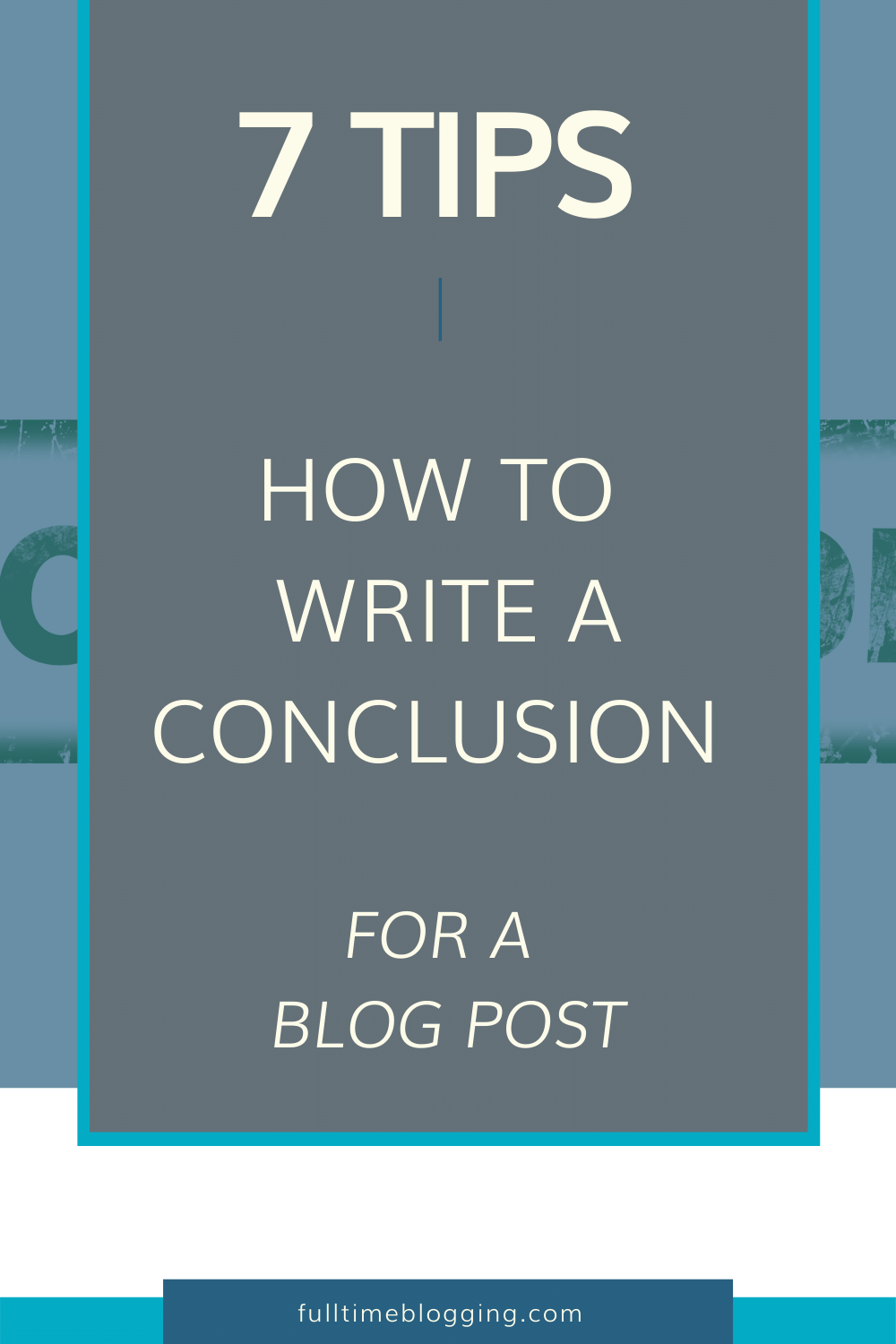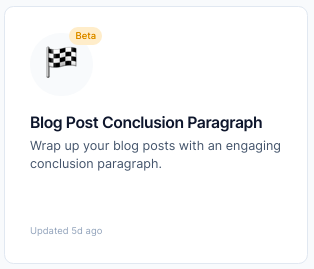Ending a blog post is just as important as starting it. The conclusion should summarize the main points of the article and leave readers with some final thoughts to make them think about what they have read.
Here are 7 tips for writing an engaging blog post conclusion.

1) Include An Overview Of The Points You Made In The Blog Post
There are two points to include in your overview:
a) what you did, and
b) why it’s important.
For example,
“We walked through our process for how we wrote this blog post conclusion. This is not only an important step in writing good content but also ensures that readers have context about where they are reading.
It helps them understand the importance of things like highlighting key takeaways from each paragraph or section."
The first sentence is what I did (walking through steps). The second sentence talks about why it's important - giving people context so they know why certain things were included.
2) Provide Your Opinion On The Topic Discussed In Your Blog Post
One of the best conclusions to a blog post is an opinion, whether you agree or disagree with the topic.
Your opinion will show the readers that you have a point of view and are committed to it.
If you disagree with the topic, it is even more important to include an opinion.
This will show your readers that the blog post was written by someone who believes in their point of view, and not just a person spouting off about something they know nothing about.
3) Ask A Question(s) About The Content
You need to ask questions about your content. Doing so will help identify if you are actually helping people solve their problems and issues.
Doing what has been done before doesn't always result in a successful outcome, because it may not be as effective with today's audience due to changing times/technology/cultures.
4) Offer A Solution To Address Any Problems That Were Mentioned
The best way to address any problems that were mentioned in the blog post is to offer a solution.
A well-structured conclusion will not only summarize your points but also leave readers with an easy action step they can take as a result of reading your article.
Tell them what you recommend they do and give reasons for why it's important.
5) Share One Last Thought Or Quote From The Article
Add a quote from one of your sources, like "I teach people how they need to live in order to thrive." - Source
You can also mention what is coming up next week or recommend other posts on your website.
6) Add A Call-To-Action (CTA)
A CTA or call-to-action encourages people on your site, who have just read about a problem you're addressing, to take action and do something about it.
For example: "Take our survey!" or "Download this eBook."
Some other examples of calls-to-action are:
- applying for an exclusive discount
- requesting more information via email
- signing up for your newsletter
- downloading one of your reports and
- connecting with you on social media channels.
You can also tell people how to get in touch with you if they want more information about your business, products, etc.
7) Use The "Blog Post Conclusion Paragraph " Template
Try the Blog Post Conclusion Template from Jarvis.ai.
Go to Dashboard > Templates > Blog Post Conclusion Paragraph.

In the "What are the main points or outline of your blog post?" box, copy your blog post's headings.
In this example, I am going to copy the current headings (pointers) we have in this lesson:
- Include an overview of the points you made in the blog post
- Provide your opinion on the topic discussed in your blog post
- Ask a question(s) about the content
- Offer a solution to address any problems that were mentioned
- Share one last thought or quote from the article
- Add a call-to-action
- Use The Blog Post Conclusion Paragraph Template
I will paste these seven-pointers into the box, together with my main topic.

In the call-to-action, I want to invite the readers to try the template in Conversion.ai
The tone of voice is "helpful." You can play with different adjectives for the tone of voice.
Press "Generate AI Content " again until Jarvis, the AI writing assistant of Jarvis.ai (previously called Conversion.ai), gives you something you want.
Conclusion
The conclusion of your blog post should be clear and concise. It is important to
- summarize the points you made in the body,
- provide your opinion on the topic discussed,
- ask a question or two about what was addressed,
- offer solutions for any problems that were mentioned, and
- share one last thought or quote from the article with readers before asking them to contact you if they want help applying these principles.
For a tool or template to make writing conclusions with ease, check out the Blog Post Conclusion Template at Jarvis.ai!
And if you are wondering if Jarvis wrote the conclusion, yes he did. 🙂
Let me know what you think of Jarvis!



